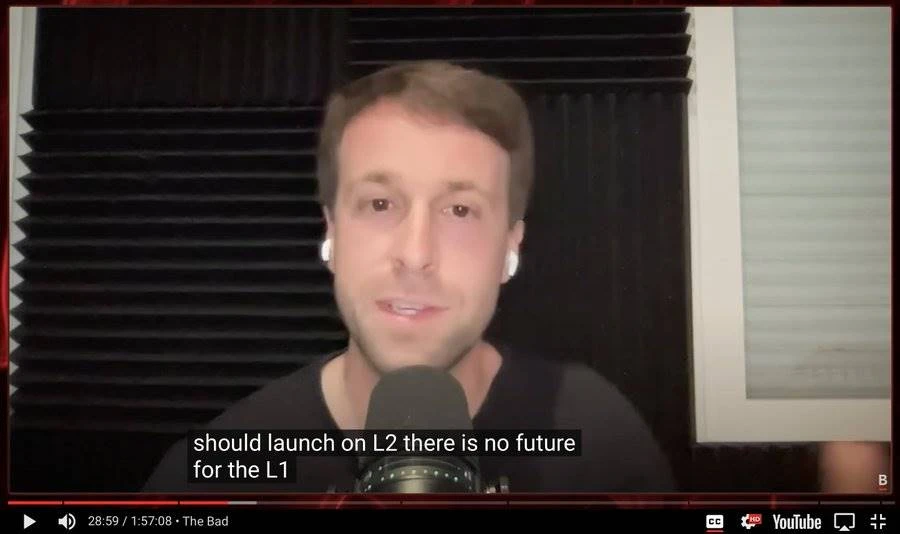Экономический счет расширения Ethereum: стоит ли отдавать большую часть доходов от сортировки в L2?
Оригинальный автор: Doug Colkitt
Оригинальный перевод: TechFlow
This is a good analysis of Data Availability (DA), and the most reasonable bullish speculation for DA. However, I think it is impossible for DA to get close to 50% of L2 fees. Because from an economic structure point of view, the value accumulation of sorting always far exceeds DA.
Основной бизнес блокчейна — продажа пространства блоков. Поскольку пространство блоков трудно обменивать между различными цепочками, они практически образуют монополию.
However, not all monopolies can obtain excess profits. The key lies in whether prices can be differentiated for consumers.
Without price differentiation, monopoly profits are little different from commodity goods. Think of how airlines differentiate between price-conscious business travelers and budget-conscious consumers, or how the same SUV is sold at very different prices under the Volkswagen, Audi, and Lamborghini brands.
Priority fees are an extremely effective price differentiation mechanism in blockchains. The highest priority transactions pay fees far exceeding the median.
L2 and Solana achieve high throughput and high revenue by leveraging sorter priorities for price differentiation. Marginal transactions pay very low fees, supporting high TPS, while price-insensitive transactions pay the majority of network revenue.
Below is the transaction distribution of 5 randomly selected blocks from Base L2. This shows a clear Pareto distribution, making price differentiation extremely effective. The top 10% of transactions pay 30% of the revenue, while the bottom 10% of transactions pay less than 1%.
The problem is that while the sorter can profit from this, the DA layer cannot participate because it has no price differentiation capability. Whether it is a high-value arbitrage transaction or a 1 wei junk transaction, the fee paid on Ethereum DA is the same because they are settled in the same batch.
Since the value of marginal transactions is very low, high TPS can only be achieved when the median transaction can be on-chain at close to zero cost. But on the DA layer, basically every transaction pays the same fee. The DA layer can either have high throughput or high revenue, but not both.
This makes it nearly impossible for rollups to scale without impacting Ethereum network revenue. The rollup-centric roadmap is inherently flawed because it gives up the valuable part of the network (ordering) in the mistaken belief that it can be made up with the worthless part (DA).
I was initially optimistic about the rollup-centric roadmap because I thought reasonable people would recognize the economics of price differentiation and that it could develop in parallel with L1 expansion.
High-value, price-insensitive users will choose L1 for its durability, security, and finality, while L2 focuses on marginal low-price users who are excluded by L1鈥檚 high fees. As a result, Ethereum still earns significant sorter rent.
However, Ethereum鈥檚 leadership has repeatedly stressed that L1 as an application layer is no longer actually important and will not scale. As a result, users and developers have reacted rationally, resulting in the current gradual decline of the L1 application ecosystem and the decline of Ethereum鈥檚 network revenue.
Если вы считаете, что долгосрочная ценность ETH заключается в том, чтобы быть денежным активом, то это все еще может быть осуществимо. Заставляя больше людей держать ETH, он становится долговечной формой денег. И субсидирование L2 без накопления стоимости в базовом слое может способствовать этому.
Но если вы верите, что долгосрочная ценность ETH заключается в том, чтобы быть сетевой долей в широко используемом протоколе (что, я думаю, более вероятно, чем ETH как деньги), то накопление стоимости должно произойти. Очевидно, что мы здесь упускаем цель из-за ошибочных экономических предположений.
This article is sourced from the internet: Ethereum expansion economic account: Is it worth giving the bulk of sorting revenue to L2?
По теме: Изучение экономики баллов: как разработать эффективную программу баллов?
Оригинальный автор: kenton.eth Оригинальный перевод: Ismay, BlockBeats Примечание редактора: Программы баллов стали важным инструментом для проектов по завоеванию лояльности пользователей и содействию росту продукта. Автор этой статьи, Кентон, основатель Sense Finance и бывший инженер по интеграции MakerDAO, подробно обсуждает разработку и реализацию программ баллов, а также их преимущества и недостатки в практическом применении. Из успешного опыта таких проектов, как Ethena, Napier и Blur, мы видим, что разумная стратегия баллов может не только эффективно улучшить KPI проектов, но и получить преимущество в рыночной конкуренции. Однако программы баллов также сталкиваются с такими проблемами, как отсутствие прозрачности и усталость пользователей, и остро нуждаются в дальнейших инновациях и оптимизации. На Web3 наступает новая эра цифровой лояльности, движимая…











